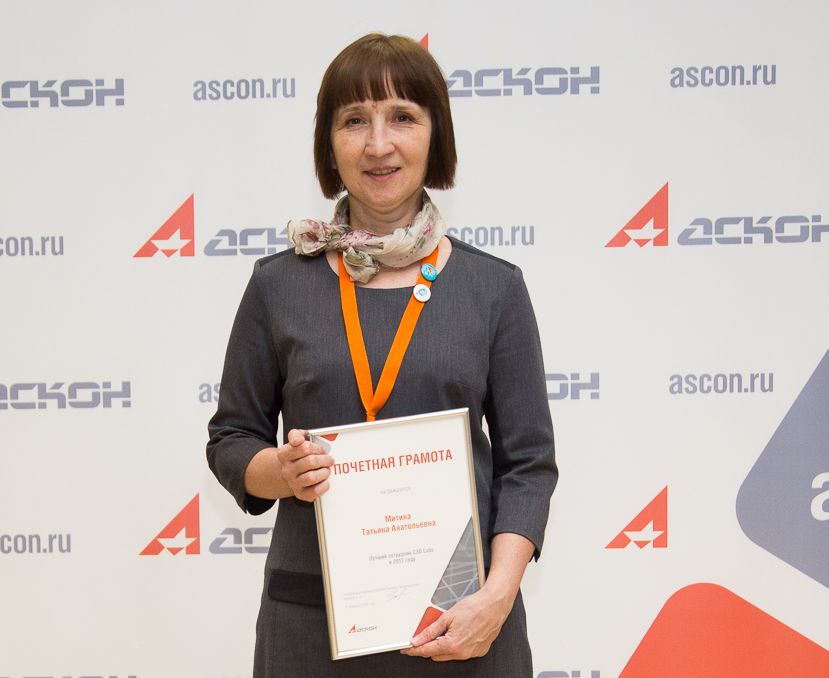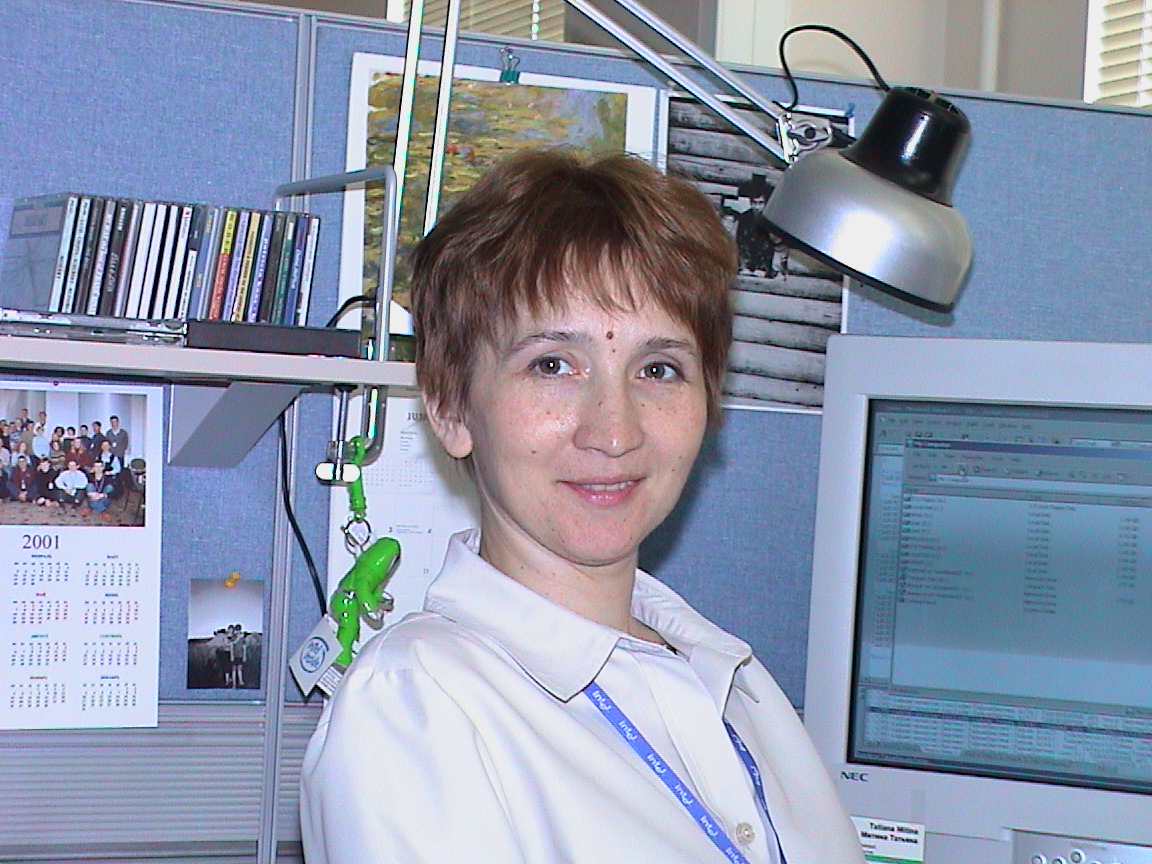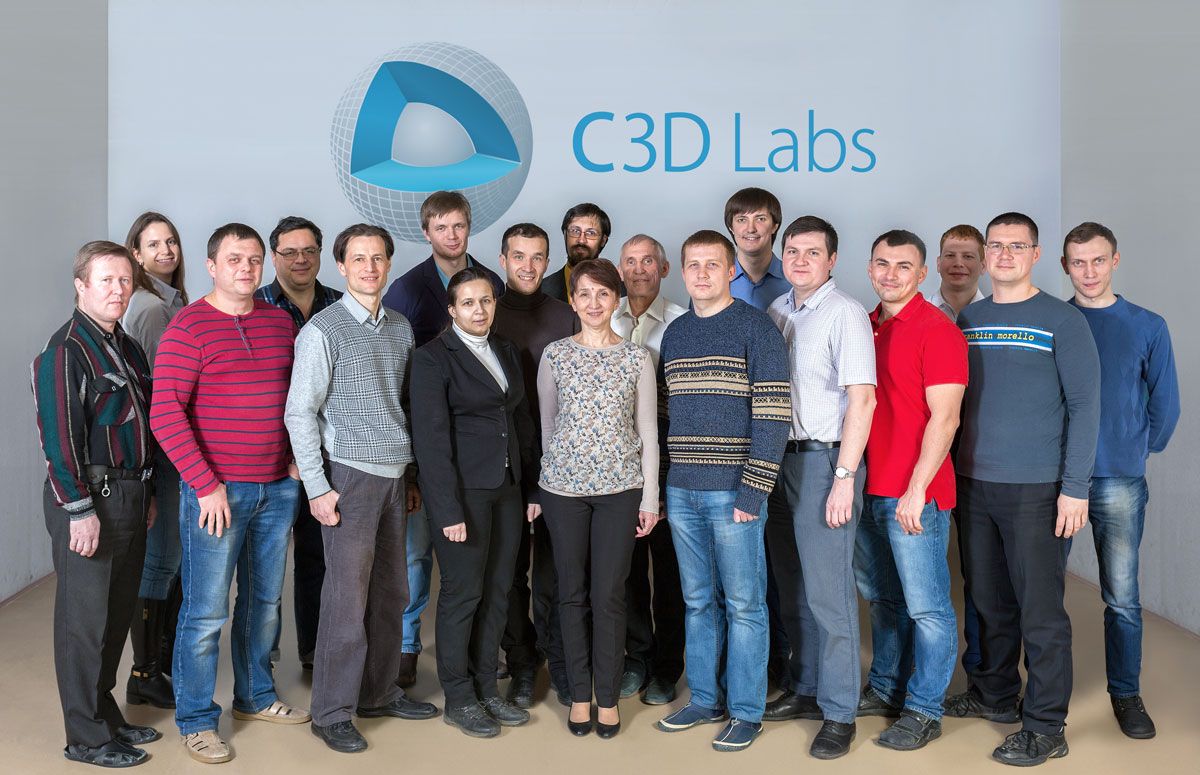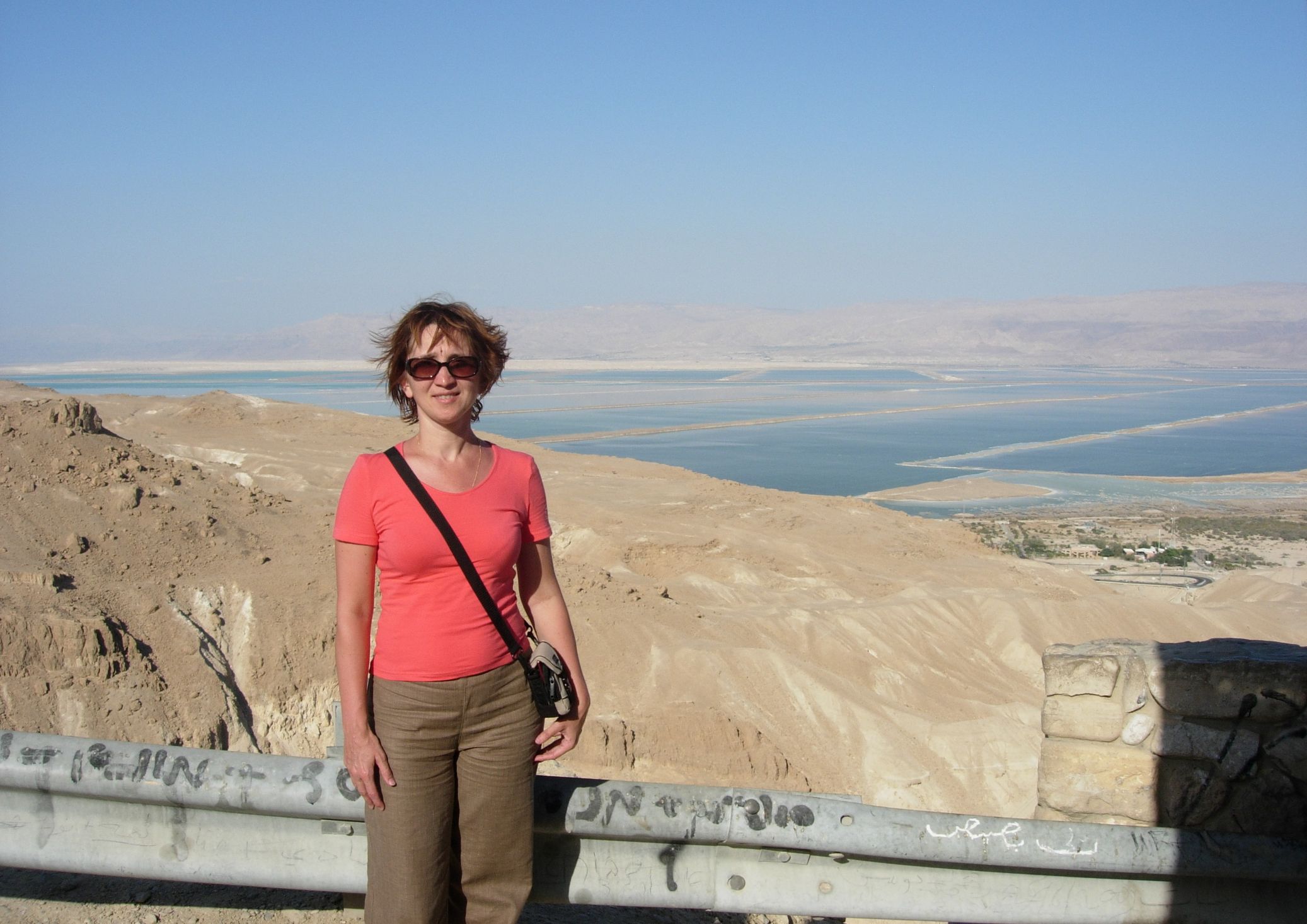I'm 57 and I'm a scrum master
With this post, we answer the question of whether there is a career for a programmer (and generally a job) after 50. Tatyana Mitina, head of programming at the C3D Labs development center in Nizhny Novgorod, tells her story. She worked for 16 years at Intel, and now she has been developing a geometric 3D core.

I graduated from the University of Gorky, Faculty of Computational Mathematics and Cybernetics with a degree in Applied Mathematics. We were released as mathematicians, not programmers. We saw computers as racks with transistors and wires. In laboratory work, something was calculated by rearranging these wires and simulating the work of the processor. At senior courses, Basic was at a basic level. I have not come across personal computers for a long time.

Student construction team (1978)
After university, she worked at the Institute of Applied Mathematics, where she wrote on Fortran, which at that time was considered the most convenient language for scientific calculations. I was preparing my thesis - I was developing a complex for calculating operations with analytical matrices. It was supposed to be used in the NGO "Gidromash".
We worked in batch mode. First we wrote the program on special forms, then punched cards were punched to us, we checked them and gave them to computer operators. The whole process before getting the result of its program took more than a day. Therefore, we wrote programs very carefully, checking each letter several times, otherwise the whole cycle had to be restarted.
Perestroika began, then the USSR collapsed, we were no longer paid a salary, and I left. My dissertation did not take place, scientific career ended. But a completely new one has begun - in IT.
After the Institute of Applied Mathematics, I joined an engineering company that designed small hydrofoil vessels. Here I first saw the person. I worked in the computer department, for self-development I started writing in C, and then I got acquainted with Pro / Engineer. Our company was probably the first in the city to purchase a CAD system of this level. She worked on graphical workstations under UNIX. Powerful personnel, capable of moving heavy CAD, has not yet been.
I mastered Pro / Engineer. I remember how I modeled the propeller blade using the calculated tables. The blade section constantly changes its geometry, and this complex surface was parametrically created in Pro / Engineer. Delegations from other enterprises came to us to see how they work in CAD. We were three people who studied Pro / Engineer, and we conducted excursions. When our company began to fall apart, the three of us were happy to be snapped up by enterprises.
I moved to the design office of the aircraft factory "Sokol". They just bought Unigraphics on workstations, and it was necessary to administer the whole complex, to train employees. In order to explain to people what automation is for, I took a frame from the designers and made a three-dimensional model for them. The bosses came to watch: “Oh, the frame is spinning, cool!”. Then I even saw this 3D model of the frame in promotional materials. I am proud to say that I took part in the design of the Yak-130 combat training aircraft. She worked with his chief designer, for example, carried out calculations of the fuel level in the tanks at different rolls of the aircraft, of course, not on paper. And the people next door were drawing on the drawing boards. For me it was important to feel involved in what is embodied in the metal, flying in the sky.

Yak-130
Then there was a short stretch - the shipbuilding design bureau Vimpel, which at that time purchased the Swedish shipbuilding CAD Tribon. They needed a man to administer it. During the day, I worked at the design bureau, and in the evenings I went to work in the Nizhny Novgorod laboratory of software technology, which fulfilled orders from Intel and other foreign companies. Here I was engaged in pure C ++ programming and worked on a CAD system module for the Belgian company Brics (now Bricsys). On this wave, I got to Intel when the company opened an office in Nizhny Novgorod.

Intel (2001)
Thanks to a project with Brics, I learned English. The first time I was sent to Belgium with two colleagues, and I did not feel that such a foreign language. And I started talking when the next time I went on a business trip alone for two weeks.
The company paid for us English courses, but you will not begin to talk until you get into the language environment. I had a curious case. It was necessary to discuss something with a colleague from Australia. I still understood the Belgians who speak English, but this Australian is not at all. As a result, we sat three of us, and the Belgian colleague in his English translated the speech of an Australian to me. When I was alone on a business trip, there was nowhere to go. And I got so used to the language that when I returned home, I would answer in English on the street or in transport.
At Intel, I was able to work in different projects and in international teams. In recent years, everything has been spinning around famous profilers and debuggers: Parallel Inspector, Parallel Advisor, VTune Amplifier. I worked in teams that developed software for tweaking application performance, profiling work with threads and memory, optimizing vector calculations.

Intel VTune Enterprise Team
I did not notice any preconceptions about age. The guys I worked with didn’t even think how much older I was. I was told the story that the legendary comrade who is 78 years old works at Intel's US office. Every year he is offered to retire with severance pay, but he refuses. And there is nothing to dismiss him, because he works well, he passes all certification.

Intel (2004)
For 16 years, Intel has changed me radically, my attitude to work, my life position. Made more initiative, active, courageous. If I see that something is being done incorrectly, I will definitely say that I will take to help. Intel encouraged collaboration between people and teams. Even if you are a cool specialist, but are isolated and do not communicate with anyone, there will be no benefit to you or the company. The more a person communicates and shares his experience more actively, the more he influences his colleagues, the decision-making, the more growth opportunities he has. Such an approach to business leads out of the comfort zone, but he teaches to work on himself, adjusts to an active life position. Perhaps it was originally close to my character.
Two years ago, restructuring began at Intel, and I thought that maybe this was a chance to somehow change life - after all, I worked in one company for 16 years, I wanted to try to apply my experience in some other area. Through the GeoS company, which develops CAD systems and uses the C3D geometric core, I learned about C3D Labs and that it has a division in Nizhny Novgorod. For me, this was a return to what I once started, to CAD. In addition, I wanted to work in a Russian company - this is a different style of work, a different atmosphere, relations between people.
I immediately liked the home decor, warmer, less formal. I came here more as a programmer than a mathematician, and when I looked at the code, I was pleasantly surprised by some things. It was clear that people are well versed in C ++ - how the language works, how it works with different types of data. Competent and neat self-written containers, read / write in C3D format.

Tatyana (in the center) in the C3D Labs team (2016)
As the first independent task, I developed an extended data format based on the C3D format that we have. The existing format is very compact, the model is saved in a small file. If we have saved the model, then we must fully read it, and this is the limitation. Indeed, sometimes, to read a large model, it may take, conditionally, half an hour instead of a few seconds. Extended format allows you to write a file so that you can then not read it entirely, but read the title, select objects and read only them. This allows, for example, to quickly read and show a polygonal representation of the model, while the large model continues to be read. Extended format already used in the viewer of 3D-models C3D Viewer (read more about the enhanced kernel C3D format can be read here .
When I came to C3D Labs, some points seemed ineffective to me. The employees worked in their own sandbox, sometimes they didn’t know what their colleagues were doing, what stage they were at. But one of the main tasks of Agile is to make the development transparent.
At Intel, I was involved in organizing the development process, I was a scrum master. Based on my experience, I wrote a document in which I explained the whole process step by step, what is being done and why, who should be responsible for what. Of course, there were objections, and this is understandable. It is difficult to reorganize when you work along the same path for years. For example, colleagues did not immediately accept that after each sprint you need to talk about your work. At the first stage, Oleg Zykov, the director of the company, was very supportive. As we move forward, Yuri Kozulin, the head of development at C3D Modeler, made a great contribution. He, as the leader of the team, was important to achieve transparency of work, regular planning.
We started discussing the transition to Agile a year ago, in the summer of 2017. They held meetings, argued. There were proposals to “soften the blow”, to innovate gradually. But I behaved quite tough: we will move to a new technology immediately and in full. In general, in life I am a gentle person, but I can be persistent in my work, if I am sure that I am right. This is probably an Intel school.

Scrum session (Kolomna, 2018)
The first two months were very difficult. But now much has changed. Even those who initially disagreed are now willing to talk in scrum sessions, what they do now and what they plan to do. I went on vacation and was sure that without me planning would go well. The process is debugged, and I am thinking of transferring the reins of power, the role of the scrum master is now more technical.
I turn 58 on August 30th. At the moment I am doing multithreading. We implement parallel computing in the modules of the geometric core C3D, as well as ensure the thread safety of C3D when working in multi-threaded user applications. This is a job that is difficult to complete, the scope of work is immense. I program mostly while in C ++, since I am not connected with shells, builds. But I can correct or supplement a script in JavaScript or Python.
I see further use of my strength in improving the product structure, in code optimization. I think over the improvement of the testing system, because for some time I was the leader of testing in one of the Intel projects and I have good experience in organizing work in this area.
Since I like traveling very much, I want to learn a second foreign language, since English alone in Europe is sometimes difficult. Perhaps it will be French.


20 years: Fortran, Basic and punch cards
I graduated from the University of Gorky, Faculty of Computational Mathematics and Cybernetics with a degree in Applied Mathematics. We were released as mathematicians, not programmers. We saw computers as racks with transistors and wires. In laboratory work, something was calculated by rearranging these wires and simulating the work of the processor. At senior courses, Basic was at a basic level. I have not come across personal computers for a long time.

Student construction team (1978)
After university, she worked at the Institute of Applied Mathematics, where she wrote on Fortran, which at that time was considered the most convenient language for scientific calculations. I was preparing my thesis - I was developing a complex for calculating operations with analytical matrices. It was supposed to be used in the NGO "Gidromash".
We worked in batch mode. First we wrote the program on special forms, then punched cards were punched to us, we checked them and gave them to computer operators. The whole process before getting the result of its program took more than a day. Therefore, we wrote programs very carefully, checking each letter several times, otherwise the whole cycle had to be restarted.
Perestroika began, then the USSR collapsed, we were no longer paid a salary, and I left. My dissertation did not take place, scientific career ended. But a completely new one has begun - in IT.
30 years: CAD and C language
After the Institute of Applied Mathematics, I joined an engineering company that designed small hydrofoil vessels. Here I first saw the person. I worked in the computer department, for self-development I started writing in C, and then I got acquainted with Pro / Engineer. Our company was probably the first in the city to purchase a CAD system of this level. She worked on graphical workstations under UNIX. Powerful personnel, capable of moving heavy CAD, has not yet been.
I mastered Pro / Engineer. I remember how I modeled the propeller blade using the calculated tables. The blade section constantly changes its geometry, and this complex surface was parametrically created in Pro / Engineer. Delegations from other enterprises came to us to see how they work in CAD. We were three people who studied Pro / Engineer, and we conducted excursions. When our company began to fall apart, the three of us were happy to be snapped up by enterprises.
I moved to the design office of the aircraft factory "Sokol". They just bought Unigraphics on workstations, and it was necessary to administer the whole complex, to train employees. In order to explain to people what automation is for, I took a frame from the designers and made a three-dimensional model for them. The bosses came to watch: “Oh, the frame is spinning, cool!”. Then I even saw this 3D model of the frame in promotional materials. I am proud to say that I took part in the design of the Yak-130 combat training aircraft. She worked with his chief designer, for example, carried out calculations of the fuel level in the tanks at different rolls of the aircraft, of course, not on paper. And the people next door were drawing on the drawing boards. For me it was important to feel involved in what is embodied in the metal, flying in the sky.

Yak-130
35 лет: C++ и английский
Then there was a short stretch - the shipbuilding design bureau Vimpel, which at that time purchased the Swedish shipbuilding CAD Tribon. They needed a man to administer it. During the day, I worked at the design bureau, and in the evenings I went to work in the Nizhny Novgorod laboratory of software technology, which fulfilled orders from Intel and other foreign companies. Here I was engaged in pure C ++ programming and worked on a CAD system module for the Belgian company Brics (now Bricsys). On this wave, I got to Intel when the company opened an office in Nizhny Novgorod.

Intel (2001)
Thanks to a project with Brics, I learned English. The first time I was sent to Belgium with two colleagues, and I did not feel that such a foreign language. And I started talking when the next time I went on a business trip alone for two weeks.
The company paid for us English courses, but you will not begin to talk until you get into the language environment. I had a curious case. It was necessary to discuss something with a colleague from Australia. I still understood the Belgians who speak English, but this Australian is not at all. As a result, we sat three of us, and the Belgian colleague in his English translated the speech of an Australian to me. When I was alone on a business trip, there was nowhere to go. And I got so used to the language that when I returned home, I would answer in English on the street or in transport.
40 years: Intel
At Intel, I was able to work in different projects and in international teams. In recent years, everything has been spinning around famous profilers and debuggers: Parallel Inspector, Parallel Advisor, VTune Amplifier. I worked in teams that developed software for tweaking application performance, profiling work with threads and memory, optimizing vector calculations.

Intel VTune Enterprise Team
I did not notice any preconceptions about age. The guys I worked with didn’t even think how much older I was. I was told the story that the legendary comrade who is 78 years old works at Intel's US office. Every year he is offered to retire with severance pay, but he refuses. And there is nothing to dismiss him, because he works well, he passes all certification.

Intel (2004)
For 16 years, Intel has changed me radically, my attitude to work, my life position. Made more initiative, active, courageous. If I see that something is being done incorrectly, I will definitely say that I will take to help. Intel encouraged collaboration between people and teams. Even if you are a cool specialist, but are isolated and do not communicate with anyone, there will be no benefit to you or the company. The more a person communicates and shares his experience more actively, the more he influences his colleagues, the decision-making, the more growth opportunities he has. Such an approach to business leads out of the comfort zone, but he teaches to work on himself, adjusts to an active life position. Perhaps it was originally close to my character.
56 years: geometric core
Two years ago, restructuring began at Intel, and I thought that maybe this was a chance to somehow change life - after all, I worked in one company for 16 years, I wanted to try to apply my experience in some other area. Through the GeoS company, which develops CAD systems and uses the C3D geometric core, I learned about C3D Labs and that it has a division in Nizhny Novgorod. For me, this was a return to what I once started, to CAD. In addition, I wanted to work in a Russian company - this is a different style of work, a different atmosphere, relations between people.
I immediately liked the home decor, warmer, less formal. I came here more as a programmer than a mathematician, and when I looked at the code, I was pleasantly surprised by some things. It was clear that people are well versed in C ++ - how the language works, how it works with different types of data. Competent and neat self-written containers, read / write in C3D format.

Tatyana (in the center) in the C3D Labs team (2016)
As the first independent task, I developed an extended data format based on the C3D format that we have. The existing format is very compact, the model is saved in a small file. If we have saved the model, then we must fully read it, and this is the limitation. Indeed, sometimes, to read a large model, it may take, conditionally, half an hour instead of a few seconds. Extended format allows you to write a file so that you can then not read it entirely, but read the title, select objects and read only them. This allows, for example, to quickly read and show a polygonal representation of the model, while the large model continues to be read. Extended format already used in the viewer of 3D-models C3D Viewer (read more about the enhanced kernel C3D format can be read here .
57 years old: scrum master
When I came to C3D Labs, some points seemed ineffective to me. The employees worked in their own sandbox, sometimes they didn’t know what their colleagues were doing, what stage they were at. But one of the main tasks of Agile is to make the development transparent.
At Intel, I was involved in organizing the development process, I was a scrum master. Based on my experience, I wrote a document in which I explained the whole process step by step, what is being done and why, who should be responsible for what. Of course, there were objections, and this is understandable. It is difficult to reorganize when you work along the same path for years. For example, colleagues did not immediately accept that after each sprint you need to talk about your work. At the first stage, Oleg Zykov, the director of the company, was very supportive. As we move forward, Yuri Kozulin, the head of development at C3D Modeler, made a great contribution. He, as the leader of the team, was important to achieve transparency of work, regular planning.
We started discussing the transition to Agile a year ago, in the summer of 2017. They held meetings, argued. There were proposals to “soften the blow”, to innovate gradually. But I behaved quite tough: we will move to a new technology immediately and in full. In general, in life I am a gentle person, but I can be persistent in my work, if I am sure that I am right. This is probably an Intel school.

Scrum session (Kolomna, 2018)
The first two months were very difficult. But now much has changed. Even those who initially disagreed are now willing to talk in scrum sessions, what they do now and what they plan to do. I went on vacation and was sure that without me planning would go well. The process is debugged, and I am thinking of transferring the reins of power, the role of the scrum master is now more technical.
58 years: what's next?
I turn 58 on August 30th. At the moment I am doing multithreading. We implement parallel computing in the modules of the geometric core C3D, as well as ensure the thread safety of C3D when working in multi-threaded user applications. This is a job that is difficult to complete, the scope of work is immense. I program mostly while in C ++, since I am not connected with shells, builds. But I can correct or supplement a script in JavaScript or Python.
I see further use of my strength in improving the product structure, in code optimization. I think over the improvement of the testing system, because for some time I was the leader of testing in one of the Intel projects and I have good experience in organizing work in this area.
Since I like traveling very much, I want to learn a second foreign language, since English alone in Europe is sometimes difficult. Perhaps it will be French.

